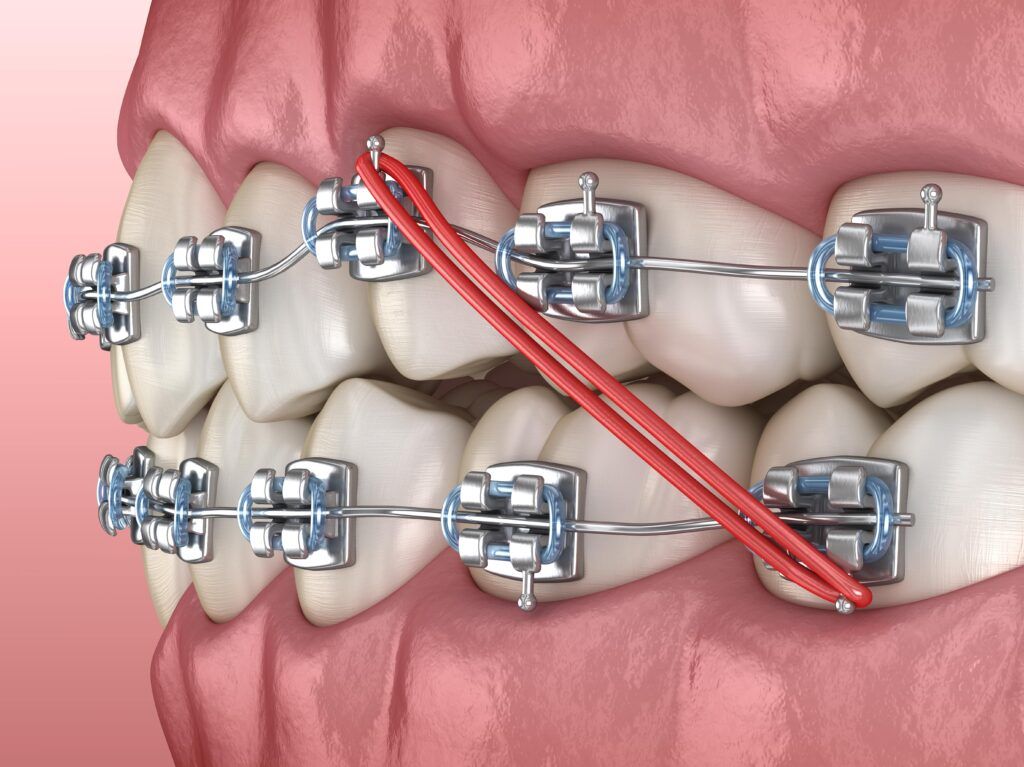The Advantages of Picking a Cumming Orthodontist for Your Braces and Aligners
The Advantages of Picking a Cumming Orthodontist for Your Braces and Aligners
Blog Article
Comprehensive Overview to Orthodontics Procedures for Fixing Oral Imbalances
In the realm of orthodontics, the journey to attaining a perfectly aligned smile includes a myriad of treatments customized to correct dental misalignments. From typical dental braces to invisible aligners and even medical alternatives, the area of orthodontics provides a variety of services to attend to differing levels of oral abnormalities. Recognizing the intricacies of each procedure, including their mechanisms, benefits, and prospective disadvantages, is vital in making educated choices concerning one's orthodontic therapy. As we browse via the thorough overview to orthodontic treatments for dealing with oral imbalances, the detailed information of each approach will unravel, clarifying the course toward a useful and unified oral alignment.
Orthodontic Procedures Summary

Routine modifications and tracking are important components of orthodontic treatment to ensure development is on track and to make any required adjustments along the method. By undertaking orthodontic treatments, people can not just achieve a straighter smile but also improve their overall oral health and function.
Conventional Braces: How They Work
When taking into consideration orthodontic therapies for oral imbalances, traditional dental braces stand out as a tried and true method for dealing with teeth positioning. Traditional dental braces consist of braces, cables, and bands that function together to use constant pressure on the teeth, slowly moving them right into the desired placement. The braces are connected to the teeth using an unique adhesive, and the cords are threaded with the brackets. By changing the tension of the cords, orthodontists can control the direction and pressure put on each tooth, directing them right into proper alignment in time.
As stress is applied to the teeth with the dental braces, the bone bordering the teeth is improved to sustain the brand-new tooth placements. People will certainly require normal adjustments at the orthodontist's office to ensure the braces continue to apply the correct pressure for effective teeth activity.
Invisible Aligners: Pros and Cons
Invisible aligners offer a discreet and convenient choice to standard dental braces for remedying dental misalignments. These clear, custom-made trays are virtually invisible when worn, making them an appealing alternative for people seeking a more cosmetically pleasing orthodontic therapy. One of the primary benefits of unseen aligners is their removability, enabling for simpler maintenance of dental health compared to typical dental braces. Clients can remove the aligners prior to eating or brushing their teeth, lowering the danger of food getting embeded the home appliance and simplifying the cleansing process.

Surgical Orthodontic Options
Surgical interventions in orthodontics existing feasible alternatives for resolving intricate oral imbalances that might not be properly settled via standard orthodontic therapies. While unseen aligners and typical dental braces can remedy lots of orthodontic problems, specific situations require surgical intervention to attain optimum outcomes. Surgical orthodontic choices are usually suggested for severe malocclusions, substantial jaw disparities, and situations where the underlying bone structure needs alteration to accomplish appropriate alignment.
One common medical orthodontic treatment is orthognathic surgical treatment, which includes repositioning the jaws to deal with practical issues such as trouble eating or speaking. This surgery is usually done in collaboration with an orthodontist that assists align the teeth prior to and after the procedure. Surgical orthodontics might also entail procedures to try this site reveal affected teeth, remove excess periodontal tissue, or improve the jawbone to create a much more harmonious face profile.
Prior to considering medical orthodontic alternatives, clients undertake a detailed assessment to establish the necessity and possible benefits of such treatments. cumming orthodontics. While surgery might appear complicated, it can significantly enhance both the feature and looks of the smile in cases where traditional orthodontic therapies drop short
Retainers and Post-Treatment Care

Post-treatment treatment entails following the orthodontist's directions faithfully. This might include proper oral health methods, participating in follow-up appointments, and wearing the retainers as recommended. Failure to conform with post-treatment treatment guidelines can cause regression, where the teeth gradually return towards their original settings. Constant retainer wear, great oral health, and routine oral examinations are crucial for keeping the outcomes attained via orthodontic surgical procedure and ensuring the long-term security of the dealt with oral placement.
Verdict
In final thought, orthodontic procedures supply various alternatives for fixing oral misalignments. Surgical orthodontic alternatives are available for extra severe imbalances. try this Overall, orthodontic treatments can effectively enhance oral health and visual appearance.
As we navigate via the extensive overview to orthodontic treatments for fixing oral imbalances, the elaborate information of each approach will unravel, losing light on the path toward a unified and functional oral alignment. - cumming orthodontics
One of the most common orthodontic treatments is the use of dental braces, which are composed of metal brackets and cables that use mild stress to gradually shift teeth into the wanted placement.When considering orthodontic treatments for dental misalignments, standard dental braces stand out as a time-tested method for fixing teeth positioning. Furthermore, unseen aligners might not be suitable for complex orthodontic issues that require more considerable teeth motion, as they are commonly recommended for mild to moderate cases. Retainers are customized orthodontic devices click here for more developed to hold teeth in their fixed settings after the conclusion of orthodontic treatment.
Report this page